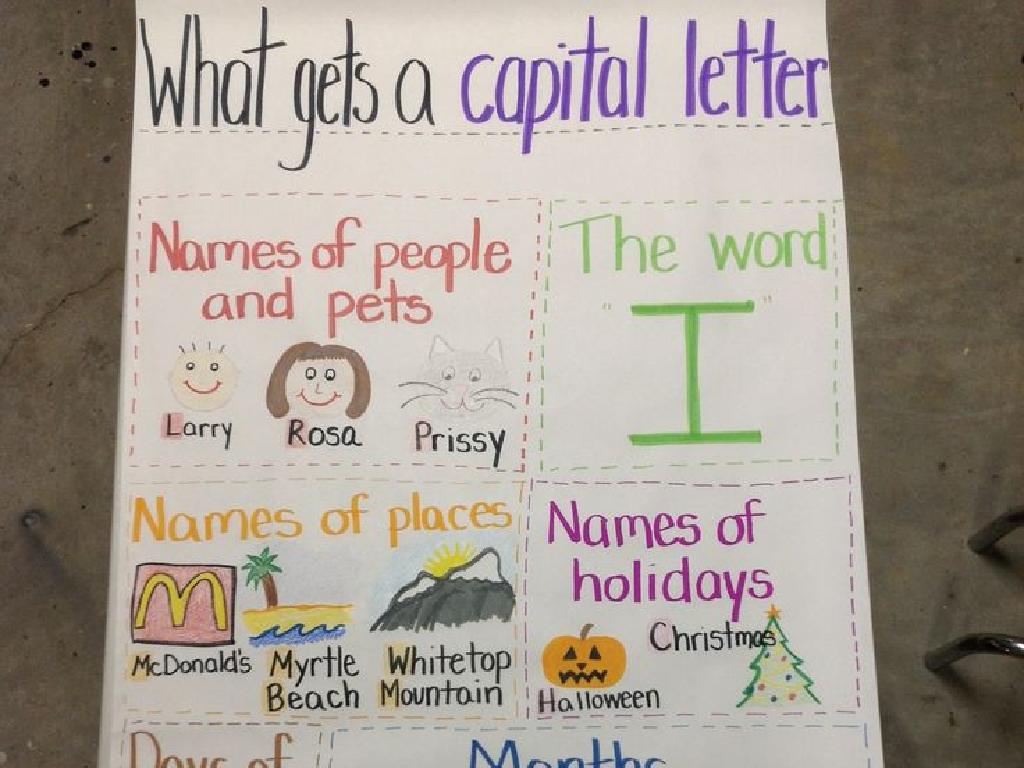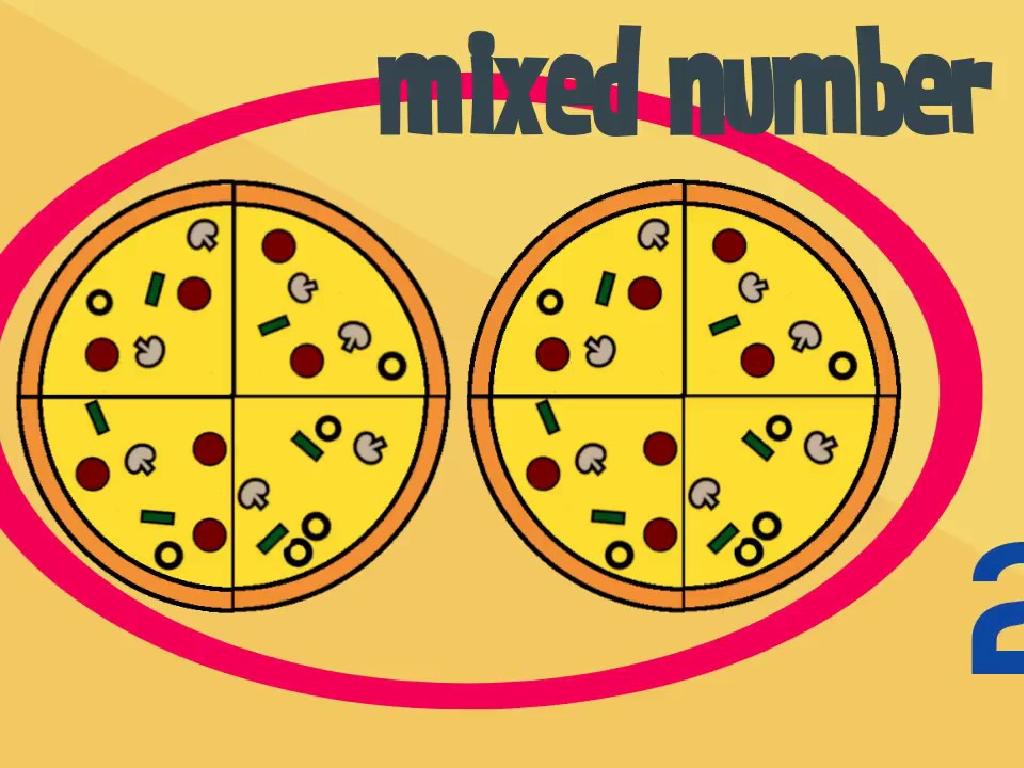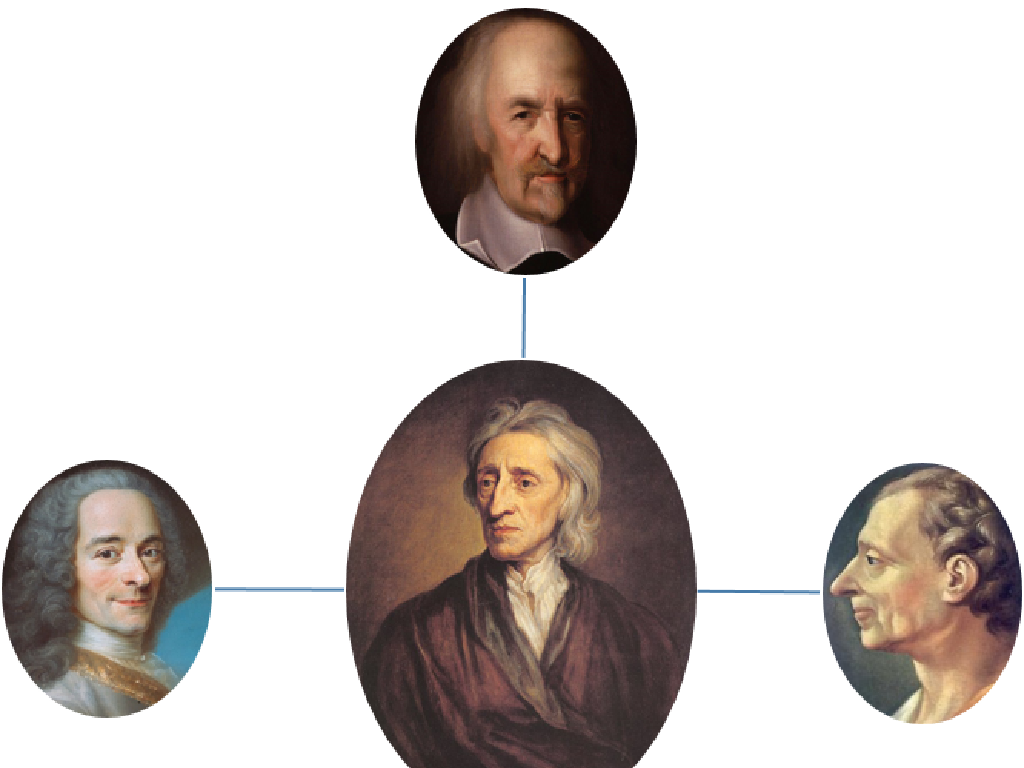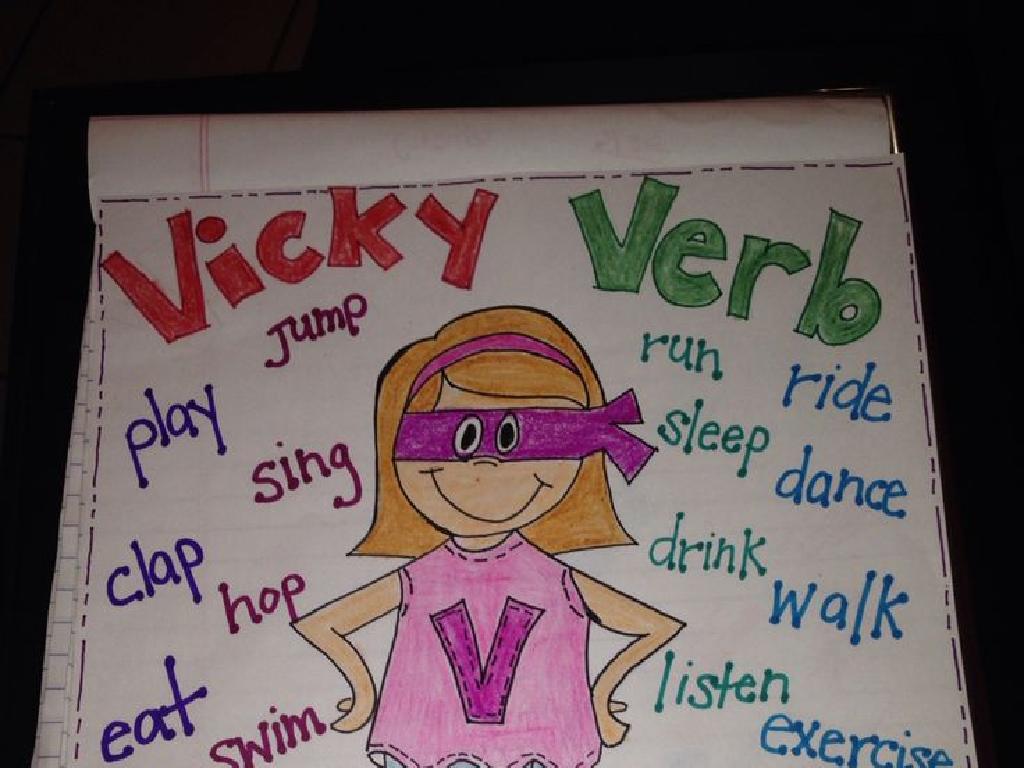Find Antonyms In Context
Subject: Language arts
Grade: Third grade
Topic: Categories
Please LOG IN to download the presentation. Access is available to registered users only.
View More Content
Today’s Adventure: Finding Antonyms!
– What are antonyms?
– Words with opposite meanings, like ‘hot’ and ‘cold’.
– Examples of antonyms
– ‘Big’ and ‘small’, ‘happy’ and ‘sad’, ‘fast’ and ‘slow’.
– The role of antonyms in language
– They help us describe things better and avoid repetition.
– Practice finding antonyms
– We’ll look for antonyms in sentences from a story.
|
This slide introduces the concept of antonyms to third-grade students, which are words with opposite meanings. Start by explaining the definition and then provide clear examples that the students can relate to. Discuss why antonyms are important: they enrich our language, make our writing more interesting, and help us to be more specific in our descriptions. For the practice activity, choose a familiar story and work through a few sentences together, identifying antonyms. Encourage students to think of antonyms for words and to use them in their own sentences. This will prepare them for a class activity where they will find and share antonyms from their reading.
Exploring Antonyms
– What is an antonym?
– Words with opposite meanings
– Examples of antonyms
– ‘Hot’ vs ‘Cold’, ‘Big’ vs ‘Small’
– Discovering opposites
– Look for clues in sentences
– Your turn to find antonyms
|
Begin the lesson by explaining that antonyms are words that have opposite meanings, which helps students understand contrasts in language. Provide clear examples such as ‘hot’ and ‘cold’ or ‘big’ and ‘small’ to illustrate the concept. Encourage the students to use context clues from sentences to find antonyms. For instance, if a character in a story goes from a ‘noisy’ room to a ‘quiet’ library, ‘noisy’ and ‘quiet’ are antonyms. End the slide by prompting students to think of their own examples of antonyms, which will be shared in the next class. This activity will enhance their vocabulary and comprehension skills.
Antonyms in Stories
– Authors use antonyms for contrast
– Antonyms are words with opposite meanings, like ‘hot’ and ‘cold’.
– Antonyms aid story comprehension
– Understanding antonyms can clarify the story’s message.
– We’ll read a story to find antonyms
– As we read, look for words that have opposite meanings.
– Get ready to spot opposites!
|
This slide introduces the concept of antonyms within the context of storytelling. Explain that authors often use antonyms to highlight differences between characters, settings, or situations, which can add depth to the story. Encourage students to think about how recognizing these opposites can provide a better understanding of the narrative. During the activity, guide the students through a short story, pausing to identify and discuss antonyms found in the text. This interactive approach will help reinforce the concept and show students how antonyms can be used effectively in literature. Prepare a list of common antonyms that third graders can understand and relate to, and consider having a few examples ready from a story they are familiar with.
Practice Time: Shout Out the Antonyms!
– Listen to the word I say
– Think of the opposite meaning
– Shout out the antonym loud
– Let’s start with ‘Quiet’
– If I say ‘Quiet’, you might shout ‘Loud’!
|
This slide is for an interactive classroom activity designed to help third-grade students understand and find antonyms in context. Start by explaining that an antonym is a word that means the opposite of another word. Then, engage the students by saying a word out loud and having them shout out the antonym in response. Begin with the word ‘Quiet’ and encourage them to respond with ‘Loud’. After they respond, praise their efforts and move on to the next word, ‘Dark’, where the expected response would be ‘Light’. This activity helps reinforce the concept of antonyms in a fun and energetic way. Be prepared with a list of words and their antonyms for the activity, and ensure that every student has a chance to participate.
Antonyms Matching Game
– Let’s play a matching game
– Match words with their opposites
– An antonym is a word that means the opposite of another word
– Team up with your partner
– Find as many antonyms as you can!
|
This slide introduces an interactive class activity focused on finding antonyms. The game encourages students to work in pairs to match words with their opposites, fostering teamwork and reinforcing their understanding of antonyms. As a teacher, prepare a list of word pairs with clear antonyms and display them in two columns on the board or on a worksheet. Monitor the pairs as they work, offering guidance and support as needed. After the activity, review the matches as a class to ensure understanding. This exercise will help students recognize and learn antonyms in a fun and engaging way, enhancing their vocabulary skills.
Create Your Own Antonyms
– Pick a word you like
– Write a sentence with it
– Find the word’s opposite
– An antonym is a word with the opposite meaning
– Make a new sentence
– Use the antonym in a sentence that makes sense
|
This activity is designed to engage students in understanding antonyms by creating their own examples. Start by explaining that an antonym is a word that has the opposite meaning of another word. Encourage students to choose words they are familiar with and then write a sentence using that word. Afterward, they should think of the antonym and use it in a new sentence. For example, if the original sentence is ‘The sun is bright,’ the antonym sentence could be ‘The night is dark.’ This exercise will help students recognize how context can change when antonyms are used and enhance their vocabulary. During the next class, students can share their sentences and discuss how the meaning changes with the use of antonyms.
Class Activity: Antonym Hunt
– Explore the classroom for objects
– Describe each object with an adjective
– Example: If you pick a ‘soft’ teddy bear, what word describes it?
– Find an object with the opposite adjective
– Example: For a ‘soft’ teddy bear, find something ‘hard’ like a desk
– Share your antonyms with the class
|
This interactive activity is designed to help students understand antonyms by relating them to their immediate environment. Encourage the students to walk around the classroom and pick objects they can describe with an adjective. Then, they should look for another object that represents the opposite of that adjective, thus finding an antonym. For instance, if a student chooses a ‘full’ bookshelf, they might then pick an ’empty’ lunchbox as the antonym. Provide guidance and ensure safety as students move around the room. Prepare to facilitate the sharing session, where students explain their choices, reinforcing their understanding of antonyms in a fun and engaging way. Offer praise and gentle corrections as needed.
Antonym Hunt Review
– Share your antonym pairs
– Explain your antonym choices
– Why do you think these words are opposites?
– Discuss antonym discoveries
– Talk about where you found them and how you knew they were antonyms.
– Celebrate our antonym adventure
|
This slide is meant to wrap up the day’s lesson on antonyms. Students will take turns sharing the antonym pairs they found during their ‘Antonym Hunt’ activity. Encourage them to explain their reasoning for why they believe the words are opposites, which will help reinforce their understanding of antonyms. Facilitate a discussion where students can talk about their process of discovering antonyms in context. This is also an opportunity to celebrate the students’ efforts and discoveries, reinforcing the fun and excitement of learning. As a teacher, be prepared to provide feedback and guide the discussion to ensure a comprehensive understanding of the concept of antonyms.
Congratulations, Antonym Experts!
– You’re now Antonym Experts!
– Antonyms enhance writing
– Opposite words add spice to our stories and essays.
– Practice makes perfect
– The more you practice, the better you’ll get at spotting antonyms.
– Keep finding antonyms!
|
This slide is meant to celebrate the students’ new understanding of antonyms and to encourage them to continue practicing this skill. Highlight the importance of using antonyms to make their writing more dynamic and engaging. Remind them that mastery comes with practice, and they should always be on the lookout for antonyms in their reading. As a follow-up activity, consider having students write a short paragraph using a list of new vocabulary words and their antonyms to reinforce the concept.






